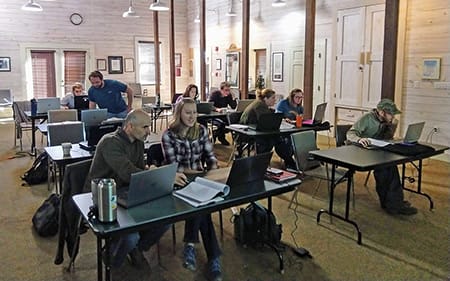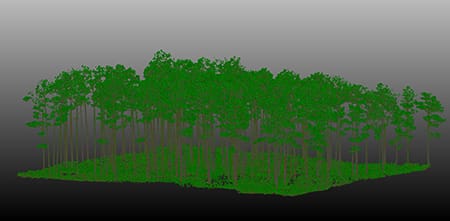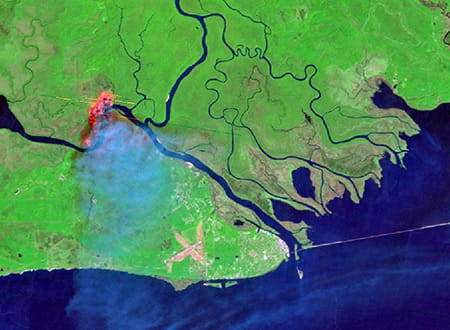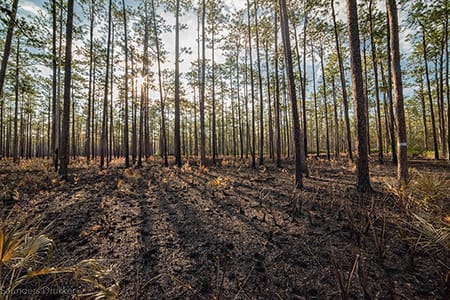This article was written by John McGuire, Tall Timbers Private Lands Prescribed Fire Initiative director and forester and Kier Klepzig, director of the Jones Center at Ichauway and forest entomologist.
This article appeared in the Tallahassee Democrat in mid-October
There has been a recent increase in pine tree deaths reported in a swath extending from Tallahassee heading north to Thomasville and then east over to Valdosta and south to Steinhatchee. This unfortunate phenomenon appears to be a result of a “perfect storm” of environmental calamities, primarily starting with a series of hurricanes and exacerbated by a hot, dry September.
The slow demise of these trees is likely to have begun in the summer of 2023 with Hurricane Idalia, followed by Hurricane Debby in August 2024, and Hurricane Helene in September 2024. These three hurricanes, impacting a 40-mile area within a year, caused widespread destruction and significant stress to the surviving trees through unseen damage to roots and internal wood structures.
Under normal circumstances, pine trees are well-equipped to defend against wood-boring insect pests through natural resin defenses (known locally as “pitch” or “sap”). However, trees under tremendous stress, such as those whipped about by hurricanes, become highly susceptible. Ips beetles (also known as ‘pine engravers’), in particular, are attracted to weakened trees and can initiate a mass attack of the inner bark (phloem) that overwhelms the trees’ natural defenses. These attacks are often rapidly followed by infestations of wood boring beetles. These ‘long horned’ (actually big antennae) beetles finish off the tree and loudly chew up the wood.

Pitch tubes showing Ips beetles.
This past summer, the hurricane-damaged trees were further stressed by intense drought during peak water demand. In some instances, prescribed fires—an important aspect of forest management—used in the summer months may have unknowingly added crown scorch stress just before the drought. This additional stress allowed a few species of native Southern pine forest beetles to overcome the weakened trees’ defenses, leading to rapid tree death.
What can you do?
The most crucial first step is to hire a forester to identify the specific species of beetles attacking the trees. The approach to treating Ips, Ambrosia, and Black Turpentine beetles can differ from that for Southern Pine Beetles. In many woodland cases, tree loss due to Ips and Ambrosia can be mitigated by changes in weather patterns or removal of the bug-ridden trees. In urban areas with high-value trees, treatments may include hiring an arborist to apply labeled insecticides to trees that have not yet been infested but are threatened by advancing beetles.
Soon enough, our weather patterns will change, and rain will begin to fall once again. Though that doesn’t imply that random trees stressed by the prior hurricanes will not continue to die, but once the rains begin and heat subsides the stress of the trees will begin to diminish and they will grow to live another year.

















